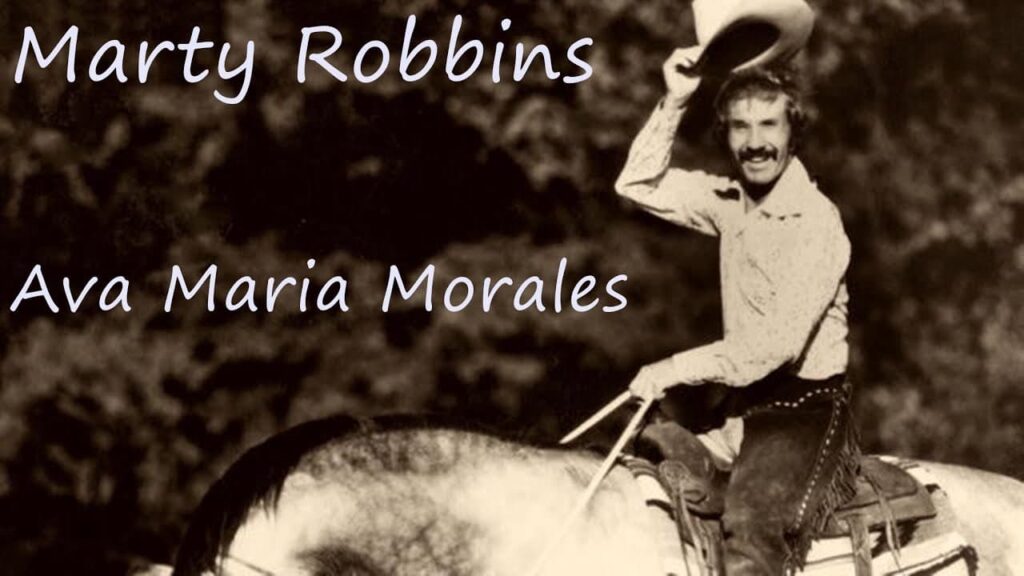
Diamonds, Deception, and the Desert’s Lasting Love: The Heartbreak of a Border Girl
For those of us who came of age with the golden tenor and cinematic scope of Marty Robbins, certain songs are more than mere melodies—they are miniature Western films played out in our minds. “Ave Maria Morales,” from his 1976 album El Paso City, is one such classic, a masterfully crafted narrative that returns to the dusty borderlands he immortalized with “El Paso.” Yet, unlike the violent climax of his most famous song, this ballad offers a quieter, more devastating heartbreak, delivered with the reflective, knowing tone only Robbins could truly command.
Chart Position and The Story’s Setting
Released on the album El Paso City in 1976, “Ave Maria Morales” was the B-side to the title track, “El Paso City,” which itself proved Marty Robbins’ enduring relevance by hitting #1 on the Billboard Hot Country Singles chart. While “Ave Maria Morales” did not chart independently as a hit single, it is inextricably linked to the success of that album, which peaked at #1 on the Billboard Top Country Albums chart and solidified his triumphant return to Columbia Records. For fans, it was immediately recognized as a spiritual sibling to his earlier masterpieces, a testament to the fact that his unique style of the “gunfighter ballad” was far from exhausted.
The song tells the story of Ava Maria Morales, a beautiful Mexican girl living in the small border town of Nogales. She falls deeply in love with a handsome cowboy who claims to work on a ranch just outside of Tucson. He courts her with lavish gifts, including diamonds, which cause the townspeople to gossip: How could he give her such diamonds as these on thirty a month cowboy pay? Ava Maria, blinded by devotion, ignores the warnings, never doubting her man.
The tragic turn arrives with the arrival of a stranger—a newly arrived Texas Ranger—who shows Ava Maria pictures of wanted outlaws. To her horror, one of the faces is that of her beloved cowboy, revealing him not as a ranch hand, but as a dangerous bandit with a price on his head.
Meaning: The Power of Denial
The true, deep meaning of “Ave Maria Morales” lies in the human heart’s profound capacity for denial and unconditional love. Marty Robbins masterfully captures a specific kind of tragic loyalty. The Ranger leaves town to pursue the outlaw, but Ava Maria’s faith is unbroken. She prays he’ll never catch her cowboy because, deep in her heart she believed that the ranger was wrong / The outlaw just looked like the cowboy that worked on the ranch just outside of Tucson.
The final, wrenching verse confirms the tragedy without a single gunshot: the outlaw is eventually caught and killed. The final lines describe the aftermath: Marty sings that the window where Ava Maria would watch for her love is now dark where a light used to be. He concludes with the heartbreaking truth: Some love stories live for a while and then they are gone. / For over a century, the story of Ava Maria has lived on and on. It’s the story of a woman choosing the beautiful lie over the ugly truth, and living—or perhaps simply ceasing to live—with the consequences.
For older listeners, the song’s reflective, almost mournful pacing evokes a powerful nostalgia not just for the musical era, but for a time when stories—real or imagined—were told with such rich, visual detail. It’s a profound meditation on the resilience of the human spirit when faced with an agonizing betrayal, a spirit that chooses to hold onto a dream, even when the reality has crumbled into desert dust. Marty Robbins left us a catalogue full of adventure, but it is in these quiet, devastating moments—like the lonely, darkened window of Ava Maria Morales—that his genius truly shines through.